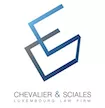On 30 June 2023, the Luxembourg tax authorities (LTA) released an update to their FAQ regarding DAC 6 (the Updated FAQ).
The main takeaways are as follows:
Notification obligation for intermediaries protected by legal privilege
As a rule, intermediaries bound by legal privilege are exempt from reporting obligations but are required to notify such relevant reporting obligations to other intermediaries or the affected taxpayer as the case may be.
However, the ECJ decided in case C-694/20 (dated 8 December 2022) that the notification obligations (regarding persons who are not their clients) to which lawyers were subjected are invalid with respect to Article 7 of the Charter of Fundamental Rights of the European Union.
In that decision, the Court acknowledged that the reporting obligation on other intermediaries who are not subject to legal professional privilege and, if there are no such intermediaries, that obligation on the relevant taxpayer, guarantees that the tax authorities are ultimately informed and are empowered to seek information from the taxpayer or conduct an audit.
The updated FAQ indicates that the notification obligations under Luxembourg law are subject to the above-mentioned ruling from the ECJ.
The practical implications of this interpretation still need to be clarified. For instance, the French Conseil d'Etat recently determined that the rules allowing the client to authorize their lawyer to proceed with the declaration, as well as those providing for an obligation to notify the affected taxpayer in the absence of any other intermediary, are not in violation of European law.
Hallmark C.1.a and determination of tax residency
Here, tax residency should be determined in application of a relevant double tax treaty or, absent such treaty, article 4 of the OECD model convention. By reference to the commentaries to the OECD Model, a person who is liable to tax in theory, but not in practice, should still be considered as a tax resident.
This hallmark will be triggered when an entity is not resident for tax purposes in any jurisdiction based on the above rules.
Hallmark E.3 – Intragroup cross-border transfer of assets, risk and/or functions
This hallmark E3 applies to arrangements involving an intragroup cross-border transfer of functions and/or risks and/or assets, if the projected annual earnings before interest and taxes (EBIT), during the three-year period after the transfer, of the transferor or transferors, are less than 50 % of the projected annual EBIT of such transferor or transferors if the transfer had not been made.
Under this hallmark, cross-border transactions such as liquidation or mergers may be subject to reporting obligations, where a relevant transfer of assets/risk/function occurs and from which result a substantial reduction of the entity's EBIT.
The updated FAQ indicated that the transfer should consist of a change in legal ownership and not in a change of ownership as determined for tax purposes. Therefore, when all other conditions are met, a transaction involving a tax transparent entity (as transferor and/or transferee) would be caught by this hallmark, even if it is disregarded for tax purposes. On the other hand, a transfer between a head office and its permanent establishment would not be subject to this hallmark.
Furthermore, intra-EU mergers, in which all assets and liabilities of the absorbed entity are transferred within a permanent establishment maintained/created by the absorbing entity situated in the jurisdiction of the absorbed entity, shall not be regarded as a cross-border transfer of assets, risks, or functions, as per hallmark E.3.
By applying this legal approach to transactions (rather than the "tax" approach), the updated FAQ states that company migrations, where the legal personality of the entity is maintained, or changes in the statutory seat are not treated as cross-border arrangements subject to hallmark E.3 since there is no transfer (i.e., there is no transferor).
Another condition of this hallmark is that the relevant transfer of assets/risks/functions should lead to the reduction of at least 50% of the EBIT, defined as "earnings before interest and taxes". Such EBIT must be defined according to Luxembourg GAAP as the profit shown in the profit and loss account, (i) increased by interest expenses and tax expenditures, and (ii) reduced by interest income and tax income. Therefore, the mere transfer of assets producing interest income such as bonds or loans should not impact the projected EBIT as defined for DAC 6 purposes and therefore not be caught by the hallmark E.3.
Please contact our tax team to obtain assistance and advice with respect to your DAC 6 obligations.
The content of this article is intended to provide a general guide to the subject matter. Specialist advice should be sought about your specific circumstances.
